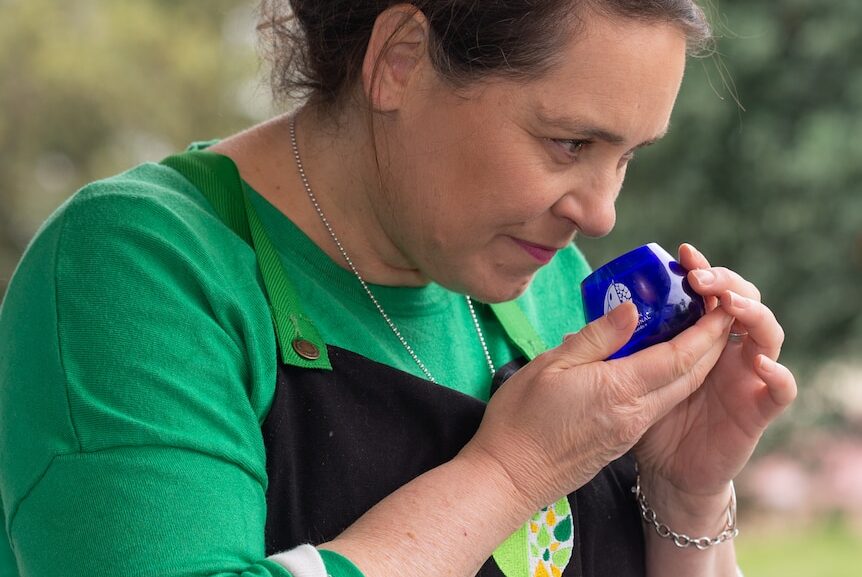Can you describe the taste of the olive oil you purchase?
Australia is producing more olive oil than ever, and growers want Australian consumers to become more knowledgeable about the product.
While olive oil is often considered a household staple, most Australians are not well-versed in key taste profiles, according to those within the industry.
So what do you look for in a good olive oil?
Olives growing in South Australia’s Coonawarra region. (ABC South East SA: Elsie Adamo)
Royal Adelaide Show Olive Awards head judge Trudie Michels said the approach was similar to wine tasting.
“We smell an olive oil like we smell a wine, and we also taste an olive oil like we taste wine,”
she said.
“The best gold medal oils have a lovely fresh and complex aroma, and also on the palate.”
According to Ms Michels, general knowledge of olive oil has slowly improved, but most Australian consumers are not regularly trying different options.
Similar to wine, olive oil palate preferences are highly individual.
Those with a developed palate can taste the differences in olive oil between seasons, much like wine vintages. (ABC Rural: Megan Hughes)
Ms Michels said limiting yourself to one type of olive oil was like only drinking one variety of wine.
“You’re missing our on a plethora of other fabulous flavours, and things that go with different foods,”
she said.
“Taste it, try it, and see what you think because they are all so different.”
The good news for Aussie consumers was that, according to Ms Michels, Australian olive oil was only getting better.
“There’s been a general increase in the number of silver and gold medals compared to 10 years ago,” she said.
Some producers are taking it upon themselves to help educate the public.
The tasting line-up at Confido Coonawarra. Can you tell an Aussie oil from an import? (ABC South East SA: Elsie Adamo)
Try oils in a tasting room
Confido Coonawarra recently started an olive oil tasting room — a first in their region in South Australia’s South East.
Consumers are encouraged to visit the olive grove to learn how olive oil is made and how to properly taste the product.
The tasting room was prompted by conversations owner Heidi Boyd was having with consumers who wanted to learn more about olive oil.
“A lot of people don’t know a great deal, but they want to learn more,” she said.
“There is a lot out there to learn, and the more people know the the more they will want to experience different olive oils.”
The owner and operator of Confido Coonawarra, Heidi Boyd, with olive grove helper Beanz. (ABC South East SA: Elsie Adamo)
Attendees sip a series of different olive oils, both international and Australian, to help them understand the differences in tastes and textures.
Visitors also have access to a flavour cheat sheet to help put a name to flavours, such as pepper, grass, fruit, and herbs.
Ms Boyd said that much like not everyone liked the same wine, not everyone would enjoy the same type of olive oil.
“It’s fun to experiment and see which one you like the best,”
she said.
Improvements made
Olive oil tasting experiences are not common, but Australian Olive Association chief executive Michael Southan said they should be encouraged.
Other strategies are also being used to help fix the knowledge gap about olive oil, starting with chefs.
“There has been a lot of work done by producers training chefs around the flavour profiles of different oils,” Mr Southan said.
“As part of that, consumers have been exposed to different ranges of flavours and styles.”
High-quality oil will likely equate with higher costs, but Mr Southan believed there was room for growth in the premium end of the market.
“Olive oil and wine actually are very similar in the sense that they are premium products,” he said.
“The consumer’s appreciation is increasing more and more. People are prepared to pay more for quality food.”

